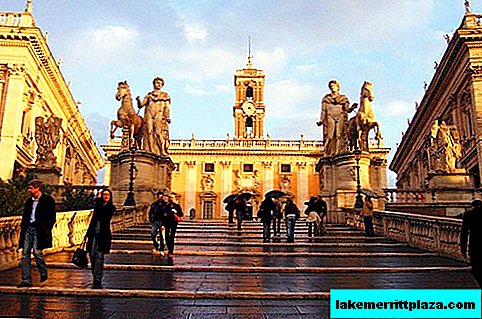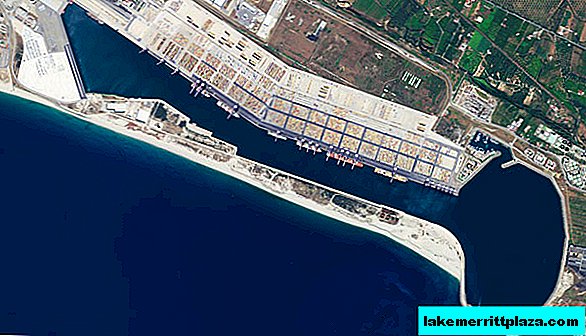Beautiful Venice, Italy’s most romantic city, to an unprepared tourist may seem pragmatically expensive. However, there are many unusual corners and interesting sights here, which you can admire absolutely for free.
San Giorgio Maggiore Island
The island of San Giorgio (San Giorgio Maggiore) is one of the most famous tourist panoramas of Venice, as it is located directly opposite the Doge's Palace and the Grand Canal. In addition, a remarkable cathedral was built here, designed by Andrea Palladio in 1555, which is worth a visit when visiting Venice.
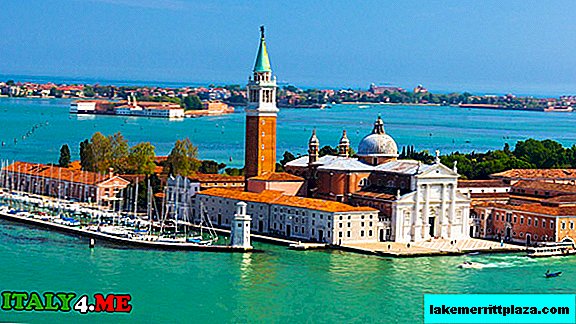
Entrance to the richly decorated Cathedral of San Giorgio Maggiore is free. Several canvases of the famous Tintoretto are stored here, including The Last Supper and The Collecting of Manna from Heaven. For € 5 you can take the elevator to the cathedral bell tower and not stand for a long time, like in front of Campanila (which, by the way, costs € 8): despite the fact that the panorama from here opens up no less impressive.
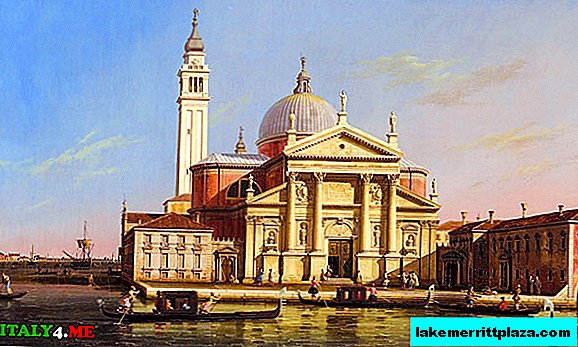
The cathedral gardens and the monastery belong to the Venetian non-profit cultural organization Cini Foundation, which organizes free exhibitions at the Le Stanze del Vetro Museum of Glass (aka Glass Rooms).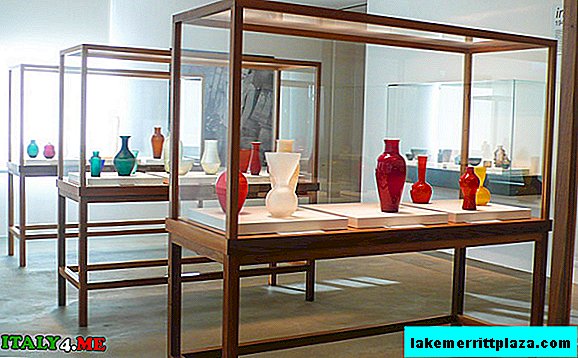
- Working hours: daily from 9.30 to 18.30;
- Vaporetto stop: San Giorgio.
You will find it useful: how to rent an apartment in Venice inexpensively.
Casino Venier
In the 18th century, during the time of Giacomo Casanova, in Venice there were more than 100 casinos - luxurious secluded salons in which the aristocracy rested. In such institutions, wealthy and noble people talked, danced, flirted and, of course, gambled.

One of the most expensive and sophisticated institutions of this type still welcomes guests, but already as the French cultural center of L'Alliance Francaise. If you know French and have a bit of charm, then you may well be allowed to walk through the rooms of an old casino, the atmosphere of which has not changed much.
Casino Venier opened in the distant 1750 and was located on the ground floor of an unremarkable building overlooking the narrow Barateri Canal. Having climbed the ancient porch and pushing the heavy door, you will be stunned by the magnificent decor of the main hall: marble floors, luxurious decorative plaster, frescoes and mirrors made of Murano glass - today this room is sometimes used for art exhibitions.
- Address: 4939 Ponte dei Bareteri, San Marco;
- Working hours: Mon-Fri from 9 a.m. to 1 p.m. and from 3 p.m. to 6 p.m. Vaporetto stop: Rialto.
Staircase of Contarini del Bovolo
Openwork spiral staircase of Contarini del Bovolo (Scala Contarini del Bovolo) should be awarded the title of the most "secretive" sights of Venice, lost in a mosaic of narrow streets near the Rialto Bridge. To get to it, follow the Campo San Bartolomeo square at the foot of the Rialto Bridge and follow the yellow signs to Accademia until you reach Campo Manin Square, where the direction to the Staircase is indicated on a small panel that is very easy to miss.
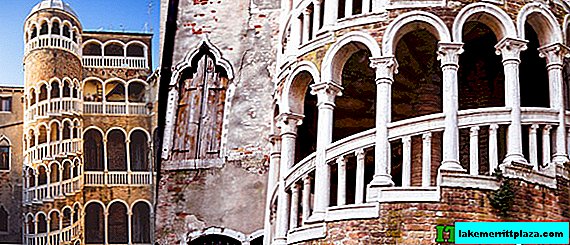
After numerous turns left-to-right, you unexpectedly go out into a small courtyard, on which a spiral staircase, rugged by arches, reigns supreme with a spiral. Since this staircase was added to the Contarini family palace in 1499, it itself has become completely invisible from the outside.
Climbing a spiral staircase may not be easy, but all efforts will be rewarded with a wonderful view of the city from the observation deck located on the top. Unfortunately, at the moment the staircase is closed for reconstruction.
- Address: Palazzo Contarini del Bovolo, 4299 Corte dei Risi, San Marco;
- Work mode: from April to October, daily from 10:00 to 18:00, from November to March, Saturday and Sunday from 10:00 to 16:00;
- Vaporetto stop: Rialto.
Jesuit Church
Despite its official name - Church of Santa Maria Assunta (Chiesa di Santa Maria Assunta), this grandiose baroque cathedral is better known under the name of the Jesuit Order (Gesuiti), which commissioned its construction in 1715. Not only is the church beautiful in itself and admission free: Jesuiti boasts a wonderful collection of paintings and sculptures. In the main hall of the church are the works of Titian and Tintoretto, who lived nearby, and in the sacristy there are 20 paintings by Jacopo Palma il Giovane.
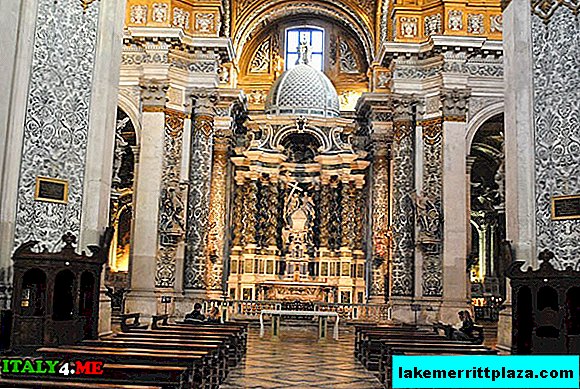
In the immediate vicinity of the church is a former Jesuit monastery. Throughout its history, it has been a school, a hospital, and a military barracks. Relatively recently, it was rebuilt as a student dormitory with a cafe open to the public and monastic cells.
- Address: Campo dei Gesuiti, Cannaregio;
- Working hours: daily from 10.00 to 12.00 and from 16.00 to 18.00;
- Vaporetto stop: Fondamente nove.
Santa Maria della Salute
The cathedral, towering at the very beginning of the Grand Canal, is often called simply Salute, and it is one of the most beloved churches of the Venetians. Santa Maria della Salute was built in 1681 in honor of saving Venice from a two-year plague epidemic. Since then, the monumental baroque facade and dome designed by architect Baldassare Longhena has become an icon of the panorama of Venice.
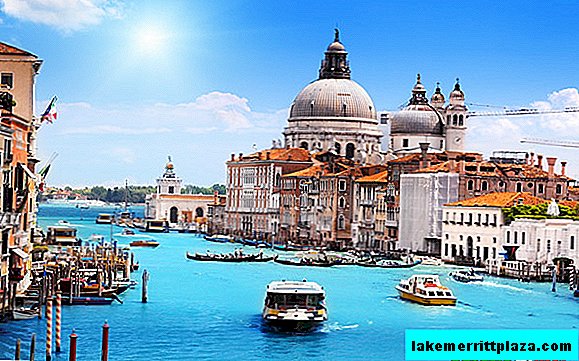
The paintings of Titian and Tintoretto and other famous artists are also preserved here. Opposite the entrance to the cathedral there is a pontoon bridge across the Grand Canal, through which thousands of pilgrims go to the cathedral for the celebration of the Festa della Salute (aka Health Festival), celebrated on November 21.
- Address: Fondamenta della Salute, Dorsoduro;
- Working hours: daily from 9.00 to 12.00 and from 15.00 to 17.30;
- Vaporetto stop: Salute.
Orsoni Color Library
In this building, lost among the lanes of Cannaregio, near the old Jewish ghetto, the only working furnace in Venice (Orsoni Mosaici) is preserved, in which smalt is created (a special colored mosaic made of glass). It also produced gold plates used in the construction of many world architectural masterpieces: St. Peter's Basilica in the Vatican, Barcelona Sagrada Familia, Paris Sacre Coeur and, of course, the San Marco Basilica in Venice.

To order a free tour of the factory-museum, a preliminary call is enough. During the tour, you will be told how smalt is made and taken to the magical Color Library - a collection of thousands of pieces of glass that differ in shades of color.
- Address: 1045 Corte dei Vedei, Cannaregio, +39 041 2440002, orsoni.com;
- Vaporetto stop: Guglie.
Hall of the library of San Marco
No one wants to go to the hospital on vacation, but the Venetian City Hospital (Ospedale Civile) is something special. It is housed in a huge 15th-century building that resembles a richly decorated wedding cake in its form and faces the square of Saints Giovanni and Paolo (San Giovanni e Paolo Campo). Visitors to the hospital immediately fall into a huge hall with a marble floor with a complex pattern, passing through which you can find yourself in the premises of an ancient monastery or in the garden.
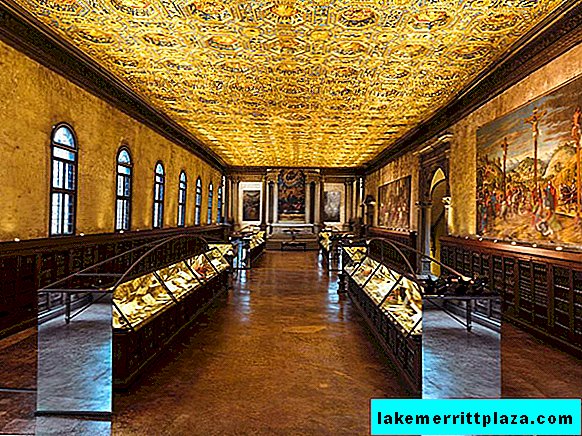
Not so long ago, the San Marco Hall was opened to the public. It was put on public display an extensive medical library (Sala San Marco Biblioteca), a rather creepy collection of medieval medical instruments and illustrations, as well as excellent reproductions of the masterpieces of Bellini, Donatello and Tintoretto, which were originally created for this Hall, but then they were transferred to the Academy gallery.
- Address: Ospedale Civile, Campo SS Giovanni e Paolo, Cannaregio;
- Working hours: tue - Sat from 9.30 to 12.30 and from 14.00 to 17.00;
- Vaporetto stop: Fondamente nove.
San Michele Cemetery
From the Fondamente Nove vaporetto stop, you can walk to the red brick walls and tall cypress trees surrounding the Venetian cemetery on San Michele in a couple of minutes. While most tourists sail to the next stop, Murano glassmaker islands, we advise you to take a break at San Michele for a while.
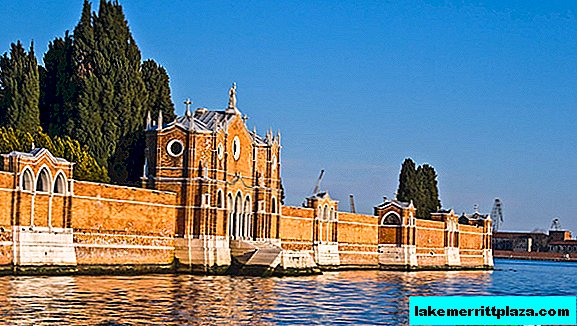
On the island there is a wonderful church, designed in 1469 by Renaissance architect Mauro Codussi. The church is decorated with special Istrian marble, and its picturesque corridors and gardens are worthy of attention, despite the fact that most of the paintings from here have long been scattered into museum collections.

The cemetery is much younger than the church: its creation dates back to the early 19th century. It is divided into three parts: Orthodox, Catholic and Protestant. Along with the tombstones of the gondoliers here are the graves of some famous personalities: Ezra Pound, Joseph Brodsky, Sergei Diaglev, Igor Stravinsky.
- Address: Isola di San Michele;
- Opening hours: daily from 7.30 to 18.00;
- Vaporetto stop: Cimitero.
Tintoretto House
Let the commemorative plaque hang here, to enter the building (Casa di Tintoretto), in which Giacomo Tintoretto lived and worked, unfortunately, is impossible. But still, a tourist should look into this unusual corner of the Cannaregio area for the sake of some exclusively Venetian details.

The corner of the Fondamenta dei Mori is marked by a characteristic white statue with a metal nose, depicting the Greek merchant Rioba. And at the entrance to the Tintoretto house itself there is another, no less bright statue of a Moorish merchant in a turban.
The Tintoretto Shop, open to visitors, is an art studio run by the friendly local artist Roberto Mazzetto.
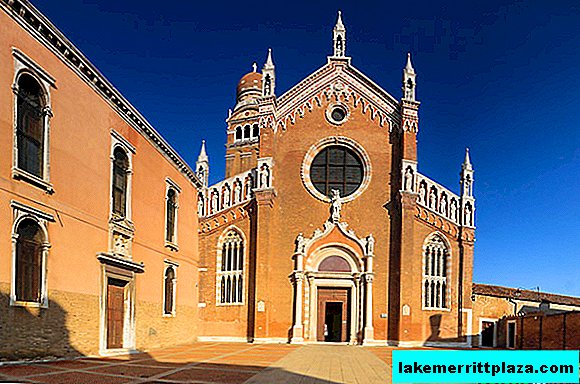
More Moorish statues adorn Campo dei Mori. Passing over the bridge to the church of Madonna dell'Orto, located behind the house of Tintoretto, one can notice another unusual frieze - an Arab merchant leading over a huge camel. By the way, Tintoretto is buried in Madonna del Orto, several of his paintings are exhibited there, but the entrance to the church is paid.
- Address: 3400 Fondamenta dei Mori;
- Vaporetto stop: Orto.
Basilica of San Marco
While in Venice, it’s easy to see that entrance fees are required almost everywhere. And even more surprisingly, the most famous landmark of the legendary City on the Water, Basilica di San Marco, is free for tourists.
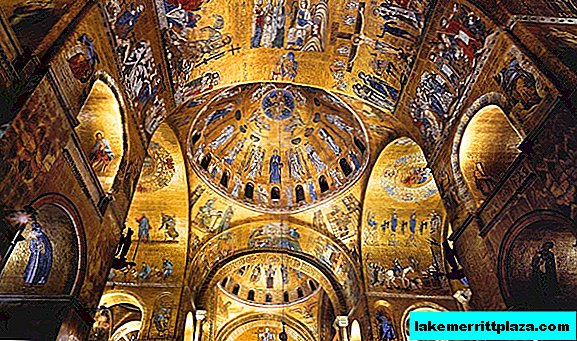
The cathedral with a fabulous facade rises on Piazza San Marco (although it is now partially covered with scaffolding for reconstruction) and is the main symbol of the heyday of the Republic of Venice. The interior of the basilica is decorated with intricate mosaic panels.
Entrance to the cathedral is free, you just have to take into account that they don’t pass inside with backpacks (bags or bags are possible, backpacks are not). However, for a tour of the San Marco Museum, the Treasury or the brilliant Golden Altar, Pala d'Oro will have to pay: around € 5, € 3 and € 2, respectively.
- Address: San Marco 328 30124;
- Official site: www.basilicasanmarco.it;
- Working hours: basilica - Sat from 9.45 a.m. to 5 p.m. from 14.00 to 16.00; Museum daily from 9.45 to 16.45; Pala d'Oro and the Treasury daily from 9.45 to 16.00;
- Vaporetto stop: San Marco.



